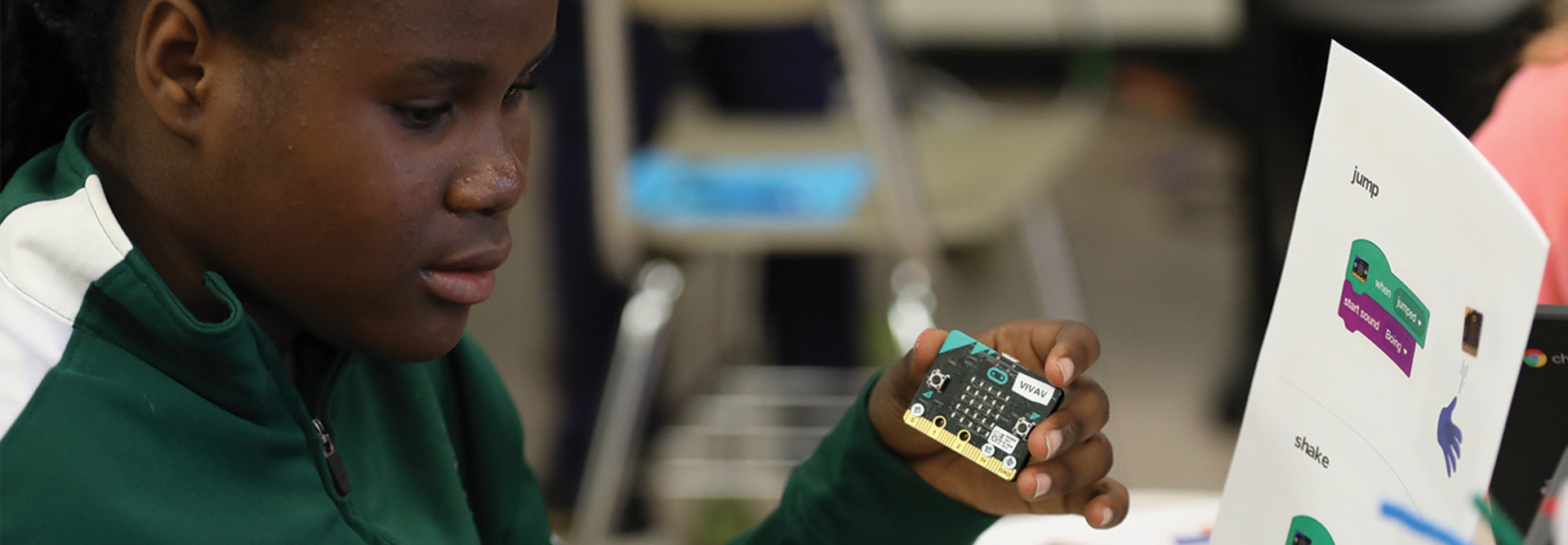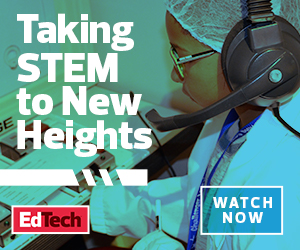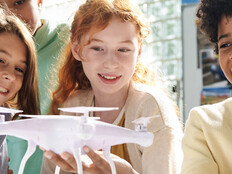You’d think that the most popular event at a computer science playground might involve putting a computer together. But for Cambridge Public School’s Computer Science Playground, the honor of most beloved activity fell in the other direction: taking laptops apart.
“Throughout the year, we’re telling kids, ‘Don’t pop the keys off the keyboard,’” says Gina Roughton, assistant director of educational technology for the Massachusetts school district. “This time, we’re telling them to go for it.”
The laptop dissection, designed to educate students on the hardware component of computer science, was a part of last year’s sixth grade STEM “playground” across the district. A growing number of schools and districts are strategically incorporating these exploratory spaces into their offerings in an effort to nurture STEM interest and decompartmentalize computer science.
STEM Playground Offers a Variety of Tech Play
At the Cambridge playground, which traveled to five schools over the course of two weeks, students spent two hours rotating through four stations in 30-minute segments. All five schools offered two stations consistently; two additional stations shifted by school. One of the standard stations let students use the invention kit Makey Makey to create music through coding. The other activity that was held in all schools — the laptop disassembly — used hardware that the district was ready to retire.
Most of the variable stations offered multiple activities for students to select on their own, much as they would in a conventional playground. For example, one school offered a station where students could choose from using the open-source prototyping platform Arduino to drive sensory triggers; developing a protocol to organize a massive number of mismatched buttons; and combining programming tools Scratch and Micro:bit to create a basic activity tracker. Other schools dabbled in game coding using recess-friendly programmable floor buttons called Unruly Splats, and crafted simple voice-activated device controls using the single-board computer Raspberry Pi.
In a nod to the movement to evolve STEM into STEAM, several schools also featured a station devoted to pixel art.
“It uses paper and markers — and that’s intentional, to show that not all things that are computer science have to be done in front of a screen,” says Ingrid Gustafson, instructional technology specialist for Cambridge Public Schools. “It reinforces that coding is a language that you have to decipher.”
For activities that did require a computer, the playground team provided Chromebooks that launched in kiosk mode (which allowed students to circumvent logins and unnecessary navigation), as well as Scratch and Micro:bit for programming.
“There’s something exciting about programming, and then seeing immediate results that you can touch and feel,” Gustafson says.
MORE ON EDTECH: Watch how the Rochester (N.Y.) City School District used technology to create a modern learning environment that excites and engages students.
Schools Strive to Make STEM Learning More Tangible and Applicable
Stimulating interest in STEM was one of the program’s goals, but the playground addressed another key objective: demonstrating the integration of computer science with daily life — including in areas that at first appear to be unrelated to the field — through a video that showed how diverse occupations ranging from farming to race car driving leverage computer programming.
This far-reaching scope is part of what makes Cambridge Public Schools’ playgrounds both important and doable in any community, even those that aren’t as rich in resources.
“Almost any community is going to have someone who’s utilizing computer science and programming in their daily life,” Roughton says. “Making it explicit to students that tech jobs exist everywhere, not just in tech-focused companies, shows that computer science is really a language that’s beneficial for everyone.”











